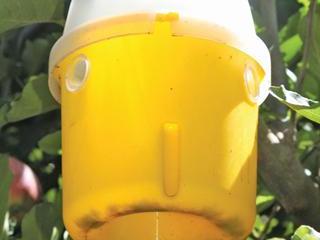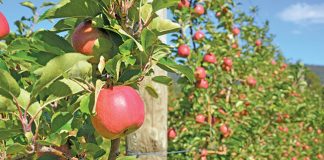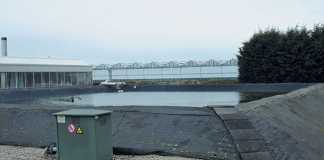
It’s well known that Mediterranean fruit fly (medfly) infestations in commercial fruit orchards can lead to significant fruit losses. But they can also be responsible for the loss of something far more serious: market access. “The phytosanitary requirements of some export destinations are so strict that exports can be suspended if the authorities find a single fruit fly in a container of fruit,” says apple and pear farmer Derek Corder of Beaulieu Farm in Elgin, Western Cape.
On top of this, more and more consumers are demanding non-chemical (biological) pest control methods. It’s small wonder that producers are having to change the way they approach pest control. Corder is today one of many farmers participating in an industry-driven, area-wide medfly control programme that covers 33 000ha and aims to reduce populations to ultra-low levels. The project involves implementing the internationally accepted ‘sterile insect technique’ (SIT) in conjunction with a range of co-ordinated practices.
According to Anton Rabe, chairperson of Fruit Fly Africa, an industry-owned service body created to execute fruit fly control programmes, this is the only sustainable way to deal with quarantine pests such as fruit fly. The SIT for medfly involves mass-rearing fruit flies, sterilising the males using gamma radiation, and then releasing these sterile males into orchards and infested areas. The eggs laid after mating are then infertile. The continual release of sterile insects ultimately results in the insect population dropping to very low levels, or even being eradicated.
An integrated approach
But SIT is not a standalone technique, says Rabe. It has to be integrated with ‘attract and kill’ traps in orchards and home gardens, as well as orchard sanitation, host plant control activities, and ground and aerial baiting. “Success with an SIT programme depends on being able to maintain a ratio of sterile males to wild males in the land of at least 80:1 to minimise the chance of a wild male mating with a wild female.
To achieve this, the wild fruit fly population levels must first be reduced to very low levels,” explains Rabe. ”If this isn’t done, there’ll be too many matings between wild males and wild females, and SIT will be ineffective.” Strolling through his orchards, where no fruit flies are in sight, Corder explains that sanitation and hygiene are critically important in controlling pests. Fallen fruit, for example, attracts pests of all types, and frequently contains fruit fly eggs or larvae, sustaining infestation in orchards and vineyards.
During fruiting and after harvesting, all fallen fruit should therefore be removed from orchards. “When you’ve finished harvesting, an orchard should be completely clean, with no fruit lying on the ground or left on the trees,” he says. The greatest source of fruit fly populations is year-round infestation in private gardens, neglected orchards and vineyards.
“This is why an awareness campaign for the wider public is so important,” notes Corder. Rabe concurs that an area-wide approach, which includes towns and farms, is required. “Unless host plants and their localities are known and properly managed, fruit fly populations will never be adequately reduced,” he explains.
Ground and aerial Baiting
‘Attract and kill’ bait stations have proved to be a safe, practical way of reducing populations in gardens and other hotspots. These typically consist of a sponge treated with a protein attractant and insecticide. Regular, well co-ordinated ground and aerial baiting reduces wild fruit fly populations to levels low enough for the initiation of a sterile fly release programme in orchards and vineyards.
An environmentally-friendly product, GF-120, is used for baiting. This consists of a plant protein and sugar formulation with spinosad as the active ingredient, according to Kobus Meintjes of Dow AfroSciences, the official supplier of this organically certified fruit fly bait. “Spinosad is derived from a soil organism, making GF-120 one of the safest pesticide products available,” he explains.
Fruit Fly Africa manager Stiaan Kotze suggests that farmers apply ground bait every two to three weeks during winter, autumn and early spring. Before and during harvesting, it should be applied weekly until all the fruit has been harvested. Aerial baiting is potentially more effective than ground bait, since an entire area can be blanketed, using an aeroplane or helicopter, on the same day every 10 to 14 days.
One aerial application can replace two ground bait applications during the fruiting season – provided fruit fly population numbers are low enough. “Like any pest control programme it is expensive,” says Corder. “But the cost of not winning the battle against medfly will be much higher.”
Contact Derek Corder on 021 848 9306, or email [email protected] .













